Every country has specific rules when it comes to photography, and Japan is no different.
Before you visit Japan, you need to familiarize yourself with a few laws. Read our guide on how to avoid getting in trouble and how to keep your Japan photography respectful.
Always Ask for Permission When Practicing Photography in Japan
There isn’t a law that prohibits street photography in Japan. As long as you don’t share your photos publicly, you can take photos of anyone. But just because there is no rule doesn’t make this any more respectful.
Many Japanese people feel uncomfortable with the idea of confronting strangers. Even if you take a photo of a stranger who doesn’t react harshly, you might end up offending them or ruining their day. Avoid this at all costs.
If a certain cosplay outfit or face stands out to you, ask the person for permission to take their photo. You might not get the candid shots you want. At least you’ll end your trip to Japan knowing that you didn’t disrespect anyone, though.

If You Can’t Get Permission to Post a Photo, Blur the Person’s Face
Japan is very strict when it comes to photo publishing laws. If you didn’t get permission from the model, you have no right to post your photos online. Japanese people are very private, so sharing a photo that has a recognisable face is a bad idea.
If you already have a few candid photos that you want to share online, you can blur out any visible faces. This might ruin your photo, but it’s the only way to stay respectful without asking for permission.
Many Japanese people and foreigners use this technique online. It might not be great for portfolios, but it’s a nice way to share details about your trip in a blog format.
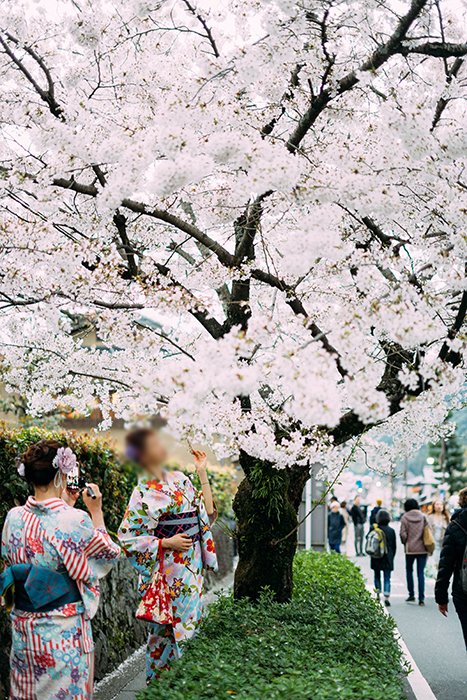
Be Prepared to Show Your Photos to the Police
Keep in mind that this happens very, very rarely.
In some cases, the police might find your behaviour suspicious and ask you to show them your photos. This shouldn’t be a problem if you follow basic common sense and take photos of everything respectfully.
If this happens without a cause, don’t get offended. This is Japan’s way of respecting its citizens’ privacy.

Don’t Use Selfie Sticks in Crowded Areas to Avoid Injuries
This might seem like a given, but it’s a common problem in many tourist destinations. Selfie sticks are fun and can make for cool selfies, but they’re not the best tool to use in crowded areas.
Because of their length, selfie sticks might hit someone or get stuck somewhere. It might be a better idea to not bring a selfie stick with you at all.
Instead, you can ask someone to take a photo of you or take a regular selfie photo.
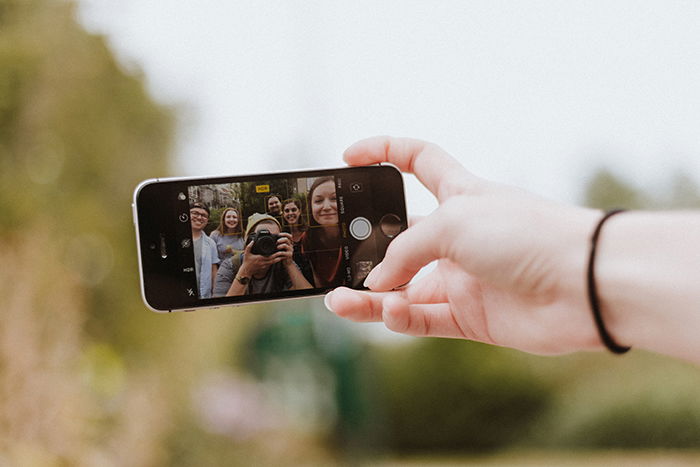
Photography Etiquette in Cafés and Restaurants
Most cafés and restaurants are open to photography. But make sure you ask the chef or waiter for permission to be safe. In most cases, they’ll be more than happy to let you take a photo of your meal.
It doesn’t matter if you’re taking professional or casual food photos. Make sure you don’t include any visible faces in your shots. If you do, remember to blur them out!
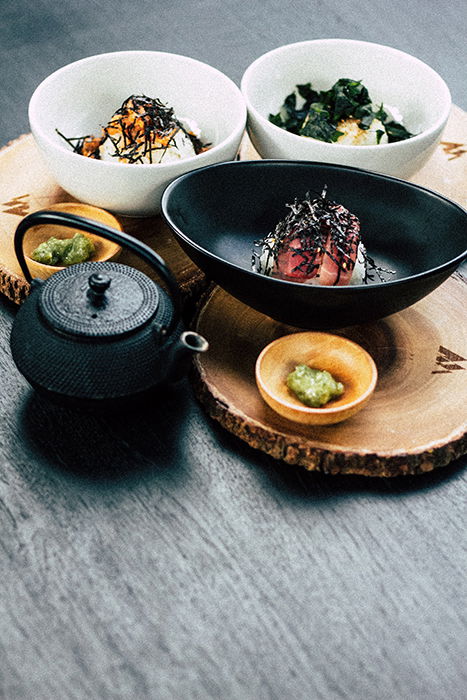
Don’t Use Flash If You’re Taking Photos at Night
Japan is filled with vibrant neon lights, which makes it one of the best countries for nighttime photos. Some tourists like to use flash to capture this beauty clearly. In most cases, flash is both disruptive and unflattering.
You can take much nicer photos without a flash. Use a higher ISO number and place your camera on a tripod. This will make your photos look more professional. The image above is a great example of this.
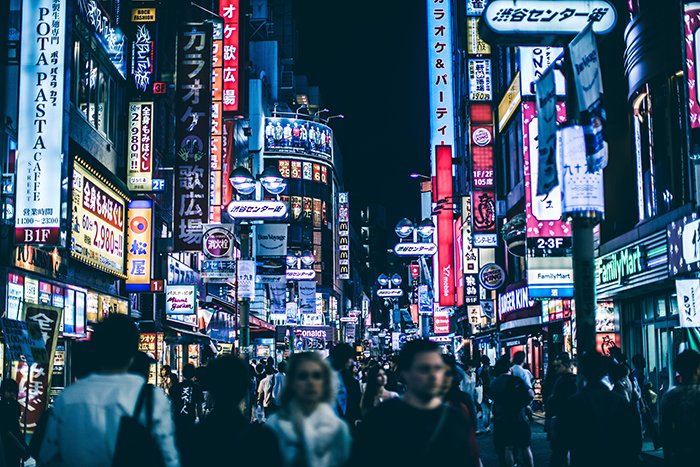
People and Things to Avoid
- No-photo areas: Japan tries to make its restrictions as clear as possible to tourists. If you see a no-photo sign somewhere, turn your camera off and enjoy your surroundings instead. No-photo signs are common in shrines, supermarkets, and some market stalls. If you feel that you shouldn’t be taking photos somewhere, even if it doesn’t have a warning sign, ask someone about it.
- Children: This is a given, even though many tourists continue to photograph Japanese children. No matter how vibrant their uniform is, you shouldn’t take photos of children. Unless you know the parents and have permission to photograph them.
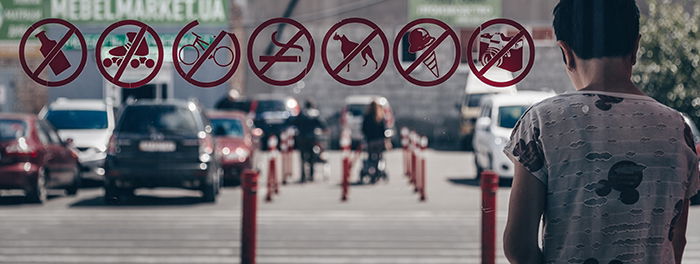
- Geishas: Maikos (apprentice geishas) and geishas are deeply respected in Japanese culture. If you see one outdoors, don’t ask her to pose for you. It’s likely that she’s too busy to waste even a few minutes of her time on a tourist. If you want to have a proper photoshoot with a geisha, you can hire one.
- People on public transport: This is very similar to Japanese street photography rules. Public transport tends to be very crowded, so it’s usually a bad idea to take photos of others. If someone feels uncomfortable, they won’t be able to walk away as freely as they could in an open area.
- Praying people: If you visit a shrine, you might come across people in the middle of a prayer. Don’t take photos of them to respect their privacy.

Common Japan Photography Questions
Is Street Photography Legal in Japan?
You’re allowed to take street photos but you need permission from the models to publish them. If there aren’t any visible faces in your street photos, you can publish them online.
Where Can I Take Pictures in Japan?
You can take photos in most public places in Japan. If you’re taking photos for commercial purposes, you need to get a shooting permit.
If there aren’t any no-photo signs around, it’s likely that you can take pictures there. If you’re not sure, ask a local for advice.
Can You Photograph Someone Without Their Consent?
You can photograph someone without their consent, but this is usually considered disrespectful. Instead, ask someone for permission before you take their photo.
If you want to share a photo of a stranger online, make sure you blur their face before you share it.
Where Can I Take Pictures in Tokyo?
There are many beautiful temples, streets, and markets in Tokyo. Most of these places are open to the public, so you can freely take pictures there. A few popular Tokyo destinations are The Imperial Palace, Ginza District, and the Meiji Shrine. We have an article on best photo locations in Tokyo to check out too!
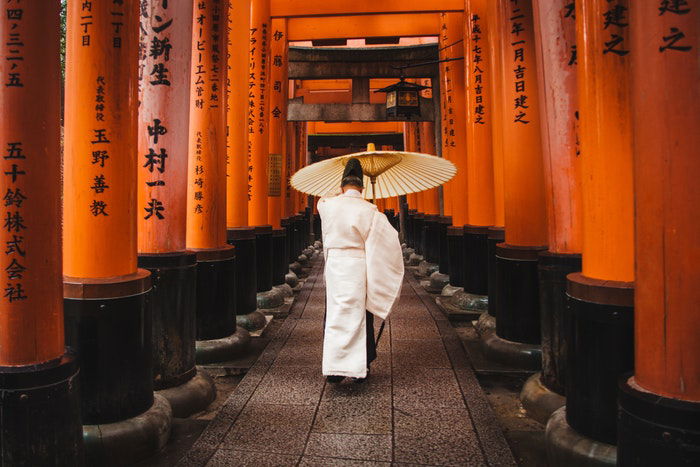
Conclusion
While it might seem like Japan has many strict rules, it’s actually very open to photographers.
As long as you follow common sense, you’re likely to have an amazing photography experience in any part of Japan.
For more travel advice for photographers, why not read our complete guide to taking travel photos.